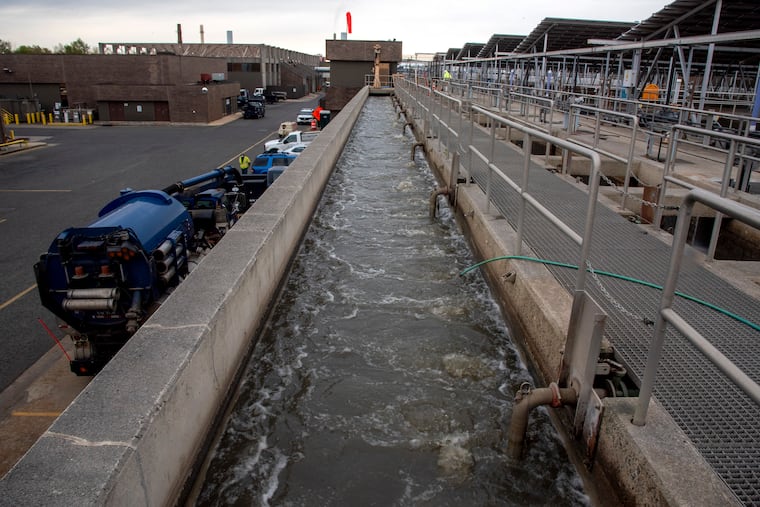Camden’s microgrid has a chance to advance environmental justice in N.J. | Opinion
Thankfully, New Jersey communities will have a new tool to say no to projects that will pollute their neighborhoods.

In response to the protests following George Floyd’s murder, different leaders, companies, and institutions publicly denounced racial injustices and systemic racism. In New Jersey, that included the new president of Rutgers, Jonathan Holloway, saying we are at a moment of “global racial reckoning,” and from Sen. Cory Booker: “We are in a raw period, and this moment has so just torn up the soil of our souls.”
However you describe it, we are living in a time where leaders are wrestling with how to translate the current heightened calls for change into meaningful policy in our government and institutions. Removing statues and symbols of racist history is one step, but as a country, we are still deciding just how serious we are about becoming antiracist through public policy. And that has to include environmental policy.
» READ MORE: Here’s how New Jersey can become America’s greenest state | Opinion
Two environmental policy examples in New Jersey can be viewed through the lens of a “global racial reckoning” — the proposed microgrid in Camden, and the recently passed cumulative impacts bill (S 232). The proposed microgrid would solve some environmental problems, yet misses the mark by perpetuating others. The cumulative impacts bill points toward long-term solutions to such tensions, by seeking to relieve the increased burden placed on overburdened communities.
The proposed microgrid is one answer to a tough lesson that hit New Jersey in 2012, when Superstorm Sandy exposed the vulnerability of our infrastructure. Some sewage treatment plants lost power and ended up releasing billions of gallons of untreated or partly treated sewage into waterways. In Camden, the sewage treatment plant (Camden County Municipal Utilities Authority, CCMUA) didn’t get hit as hard but decided to prepare for the future.
Camden’s microgrid study, funded by the Board of Public Utilities and one of 13 launched three years ago across the state, was born out of this desire for storm-resilient energy. The Camden version would connect two county facilities: the trash incinerator operated by Covanta would provide power to CCMUA, and in return, CCMUA would provide treated wastewater to Covanta. This would allow CCMUA to operate regardless of storms and prevent untreated sewage from being released, and provide the incinerator with greywater to prevent drawing hundreds of thousands of gallons from the local aquifer.
Resident feedback at city and county meetings has not objected to the microgrid concept itself, but intensely opposed the proposal’s dependence on an aging, pollution-emitting incinerator as the power source. This aspect has drawn passionate interest from a range of neighborhoods, residents, and activists in ways that few other development plans have recent years in Camden.
Camden is host to facilities that process sewage and trash for almost the entire county. So each new proposed project presents an opportunity for change — for creating just waste management systems with more equitable outcomes. The struggle during public meetings over the microgrid has demonstrated to decision-makers the connection between reliance on polluting facilities, and the history of environmental racism that we face — wherein neighborhoods of color have especially vulnerable to pollution.
» READ MORE: Wastewater for electricity: South Jersey utility in swap deal with trash-to-energy plant
In the Waterfront South neighborhood, where residents share the neighborhood with pollution-emitting industries and the incinerator, environmental racism has been part of our status quo for generations. And while we share our land with these sources of pollution, their impact spreads beyond the borders of our neighborhood. Emissions originating here float toward other Camden neighborhoods and the suburbs. For these reasons, residents and activists during public meetings have requested less polluting means of powering the microgrid than an incinerator, like solar power.
Thankfully, in the future, New Jersey leaders and communities will have a new tool for environmental justice with the recently passed cumulative impacts bill (S 232). It would require the Department of Environmental Protection (DEP), when evaluating some project permits, “to evaluate environmental and public health stressors of certain facilities on overburdened communities.” Overburdened communities are ones that experience disproportionate environmental harms and risks — and often deal with the NIMBYisms of neighboring towns.
» READ MORE: EPA to add toxic Gloucester County metal finishing company site to Superfund list
While it is unlikely this bill will be implemented in time to impact the microgrid, it offers hope for overburdened communities to have the power to “say no” to future undesired land use in their neighborhoods.
The choice we face in this moment is whether to return to how things were pre-pandemic or take the opportunity to create more equitable futures. The growing pains will be hard, but if we are earnest about addressing oppressive systems, then approaching environmental policy with a focus on racial justice is necessary to ensure lasting reform.
Mike Morgan lives in Camden with his family and thinks about air quality while walking and biking.